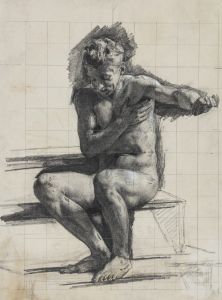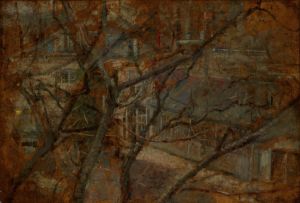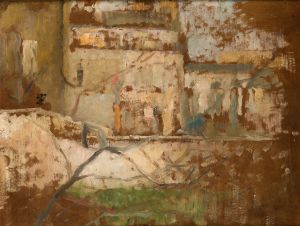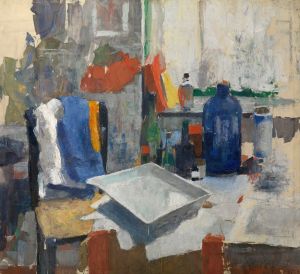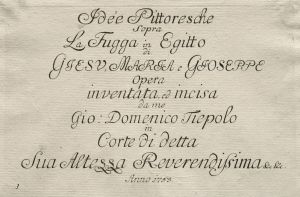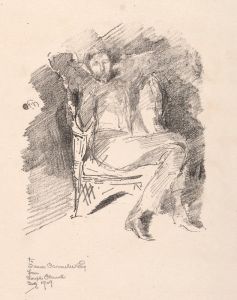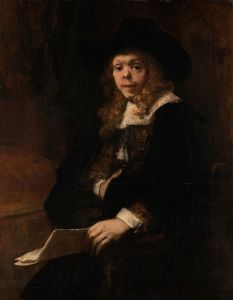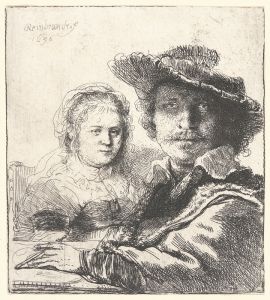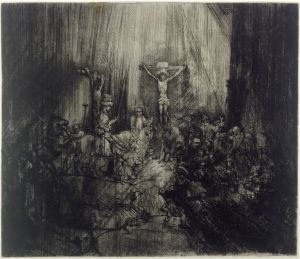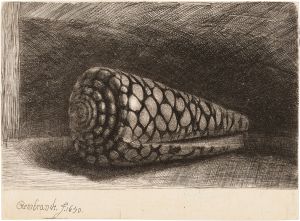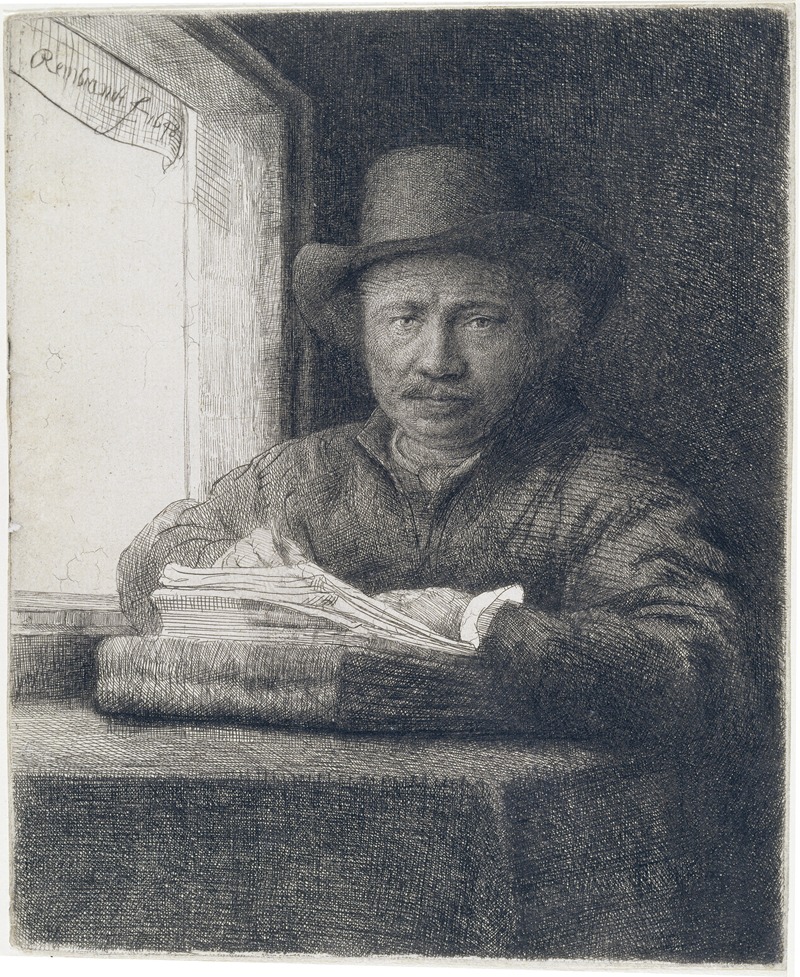
Self-Portrait etching at a window
A hand-painted replica of Rembrandt van Rijn’s masterpiece Self-Portrait etching at a window, meticulously crafted by professional artists to capture the true essence of the original. Each piece is created with museum-quality canvas and rare mineral pigments, carefully painted by experienced artists with delicate brushstrokes and rich, layered colors to perfectly recreate the texture of the original artwork. Unlike machine-printed reproductions, this hand-painted version brings the painting to life, infused with the artist’s emotions and skill in every stroke. Whether for personal collection or home decoration, it instantly elevates the artistic atmosphere of any space.
"Self-Portrait etching at a Window" is an etching created by the renowned Dutch artist Rembrandt van Rijn in 1648. This work is one of the many self-portraits Rembrandt produced throughout his career, showcasing his exceptional skill in etching, a printmaking technique that involves using acid to cut into the unprotected parts of a metal surface to create a design.
In this etching, Rembrandt depicts himself seated at a window, engaged in the act of drawing or etching. The composition is intimate and introspective, capturing a moment of quiet concentration. Rembrandt's face is partially illuminated by the light coming through the window, highlighting his intense gaze and the furrowed lines of his brow, which convey a sense of deep thought and focus.
The etching is notable for its detailed rendering of textures and the play of light and shadow, which are characteristic of Rembrandt's work. The artist's mastery of chiaroscuro, the use of strong contrasts between light and dark, is evident in this piece. The light source from the window creates a dramatic effect, emphasizing the contours of Rembrandt's face and hands, and adding depth to the scene.
Rembrandt's self-portraits are significant not only for their artistic quality but also for the insight they provide into the artist's life and personality. Over the course of his career, Rembrandt created nearly 100 self-portraits, including paintings, drawings, and etchings. These works document his changing appearance and offer a glimpse into his evolving self-perception and emotional state.
"Self-Portrait etching at a Window" is part of the collection of the British Museum in London. The etching measures approximately 16.5 x 13 cm (6.5 x 5.1 inches). It is one of the many works that demonstrate Rembrandt's innovative approach to printmaking and his ability to convey complex human emotions through his art.
Rembrandt van Rijn (1606-1669) is widely regarded as one of the greatest artists in European art history. He was born in Leiden, Netherlands, and later moved to Amsterdam, where he established himself as a prominent painter, draughtsman, and printmaker. His works encompass a wide range of subjects, including portraits, landscapes, biblical scenes, and genre scenes. Rembrandt's art is celebrated for its realism, emotional depth, and masterful use of light and shadow.
Throughout his career, Rembrandt faced both professional success and personal hardships. Despite achieving fame and recognition, he experienced financial difficulties and personal losses, including the deaths of his wife Saskia and several of his children. These experiences are often reflected in the introspective and sometimes melancholic nature of his self-portraits.
"Self-Portrait etching at a Window" remains an important example of Rembrandt's work in the medium of etching and continues to be studied and admired by art historians and enthusiasts alike. It exemplifies his technical prowess, his keen observation of the human condition, and his enduring legacy as a master artist.





